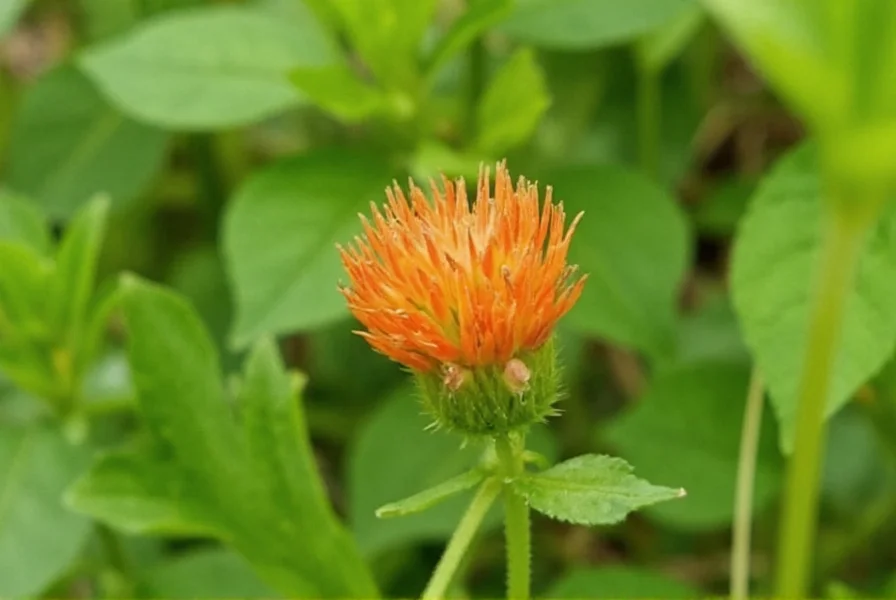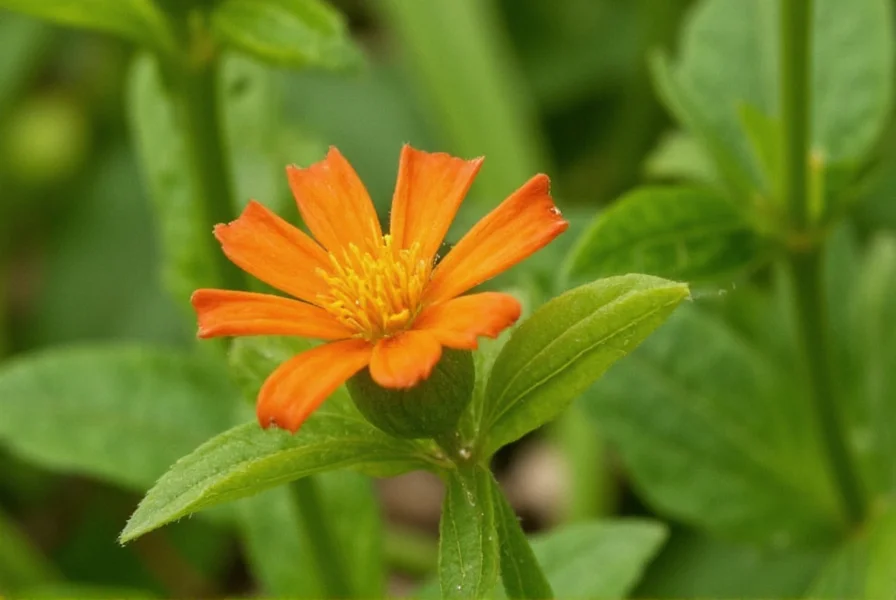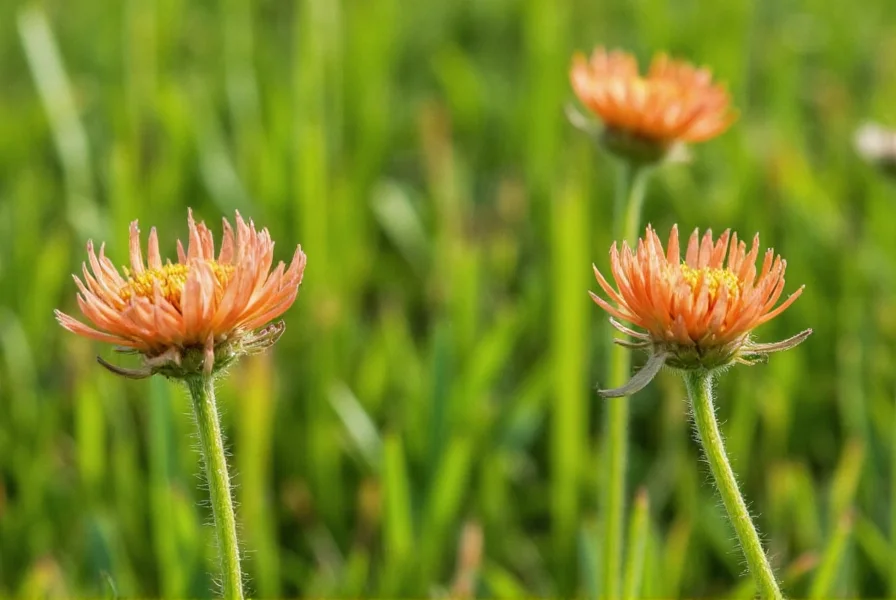When you encounter a plant with vibrant orange blossoms in a field or garden, you're likely looking at orange clover (Trifolium aurantiacum). This distinctive member of the legume family stands out from more common white and red clover varieties with its warm-hued flowers that range from pale orange to deep reddish-orange. Understanding how to identify orange clover, where it grows naturally, and its ecological contributions can help gardeners, farmers, and nature enthusiasts appreciate this valuable plant species.
Botanical Characteristics and Identification
Orange clover features several distinctive characteristics that make it relatively easy to identify. The plant typically reaches heights between 4-16 inches (10-40 cm) with multiple stems emerging from a single taproot. Its leaves follow the classic clover pattern of three leaflets (trifoliate), with each leaflet measuring approximately 1-2 cm in length and featuring a light V-shaped marking.
The most striking feature is undoubtedly the flower head, which consists of 20-50 individual pea-like flowers arranged in a dense, spherical cluster. Unlike red clover's pinkish-purple blooms or white clover's pale flowers, orange clover displays a spectrum of warm colors from soft apricot to vibrant tangerine. Each tiny flower measures about 8-10 mm long and develops into a small pod containing one or two seeds.
| Characteristic | Orange Clover | Red Clover | White Clover |
|---|---|---|---|
| Flower Color | Orange to reddish-orange | Pink to purple | White to pale pink |
| Plant Height | 10-40 cm | 20-80 cm | 5-20 cm |
| Leaf Marking | Light V-shape | White crescent | White crescent |
| Lifespan | Annual | Perennial | Perennial |
One reliable method for confirming orange clover identification is examining the calyx (the protective structure beneath the flower). Orange clover has a calyx with 10-15 sharp teeth, distinguishing it from similar species. The blooming period typically runs from April through July in its native range, with peak flowering occurring in late spring.
Natural Habitat and Geographic Distribution
Native to the Mediterranean basin, orange clover thrives in regions with mild, wet winters and warm, dry summers. Its natural range extends across southern Europe, northern Africa, and western Asia. In these areas, you'll commonly find it growing in grasslands, along roadsides, in abandoned fields, and other disturbed areas with well-drained soils.
While not as widely naturalized as some other clover species, orange clover has been introduced to various parts of North America, Australia, and South America, primarily through agricultural activities. In these non-native regions, it generally remains localized rather than becoming aggressively invasive. Understanding orange clover growing conditions reveals its preference for sandy or loamy soils with good drainage and full sun exposure.

Ecological Benefits and Environmental Role
Like other legumes, orange clover possesses the valuable ability to fix atmospheric nitrogen through symbiotic relationships with Rhizobium bacteria in its root nodules. This natural fertilization process improves soil fertility without synthetic inputs, making it particularly valuable in sustainable agricultural systems. When incorporated into crop rotation or used as a cover crop, orange clover can increase soil nitrogen levels by 50-100 pounds per acre.
The vibrant orange blossoms serve as an important nectar source for various pollinators, including native bees, honeybees, and butterflies. Research shows that the specific color spectrum of orange clover flowers attracts different pollinator species than those drawn to red or white clover varieties, contributing to overall pollinator diversity. This makes understanding orange clover as pollinator plant particularly relevant for ecological restoration projects.
Additionally, the plant's root system helps prevent soil erosion and improves soil structure through its extensive network of fine roots. In natural ecosystems, orange clover serves as a pioneer species that can colonize disturbed areas and prepare the soil for other plant species to establish.
Cultivation and Agricultural Applications
Gardeners and farmers interested in how to grow orange clover should note that this species prefers full sun and well-drained soils. It tolerates a wide pH range from slightly acidic to slightly alkaline (6.0-7.5) but performs best in neutral conditions. The seeds germinate readily when soil temperatures reach 10-15°C (50-59°F), typically in early spring.
For successful establishment, broadcast seeds at a rate of 5-8 pounds per acre or 2-3 ounces per 1,000 square feet, then lightly rake them into the soil. Orange clover requires minimal maintenance once established, though it benefits from moderate moisture during germination and early growth stages. Unlike perennial clovers, orange clover completes its life cycle within one growing season, making it ideal for short-term cover cropping or as part of a diverse annual mix.
Agricultural applications include using orange clover as a green manure crop, in pollinator habitat plantings, and as a component in wildlife food plots. Its nitrogen-fixing capabilities reduce the need for synthetic fertilizers in subsequent crops, while its flowers support beneficial insect populations that help control pest species.
Differentiating Orange Clover from Similar Species
Many people confuse orange clover with other clover varieties, particularly red clover (Trifolium pratense) and hop clover (Trifolium campestre). The difference between orange clover and red clover is most apparent in flower color (orange vs. pink-purple), growth habit (annual vs. perennial), and leaf markings.
Another similar-looking plant is bird's-foot trefoil (Lotus corniculatus), which also features orange flowers but has a different leaf structure (five leaflets instead of three) and produces long, narrow seed pods that resemble a bird's foot. Understanding these distinctions is crucial for accurate plant identification in both natural and cultivated settings.

Practical Considerations for Gardeners and Land Managers
For those considering adding orange clover to their landscape, several practical factors deserve attention. While generally beneficial, orange clover can sometimes become weedy in certain conditions, particularly in gardens where its self-seeding habit might lead to unwanted spread. Monitoring its growth pattern and removing seed heads before they mature can prevent excessive self-seeding.
One common question is whether orange clover is invasive in North America. Current evidence suggests it has limited invasive potential compared to other introduced species. It typically remains localized rather than spreading aggressively across landscapes. However, local conditions vary, so checking with regional agricultural extension services before planting is advisable.
Orange clover's relatively short lifespan as an annual makes it an excellent choice for temporary ground cover or as part of a diverse seed mix for habitat restoration. When combined with complementary species like native grasses and wildflowers, it creates a more resilient and biodiverse planting that supports a wider range of wildlife.
Frequently Asked Questions About Orange Clover
Is orange clover edible for humans?
While orange clover flowers are technically edible and have been used in salads and teas historically, they're not commonly consumed today. Unlike red clover, which has a longer history of culinary and medicinal use, orange clover lacks extensive documentation of safe human consumption. As with any wild plant, proper identification and consultation with experts is essential before consumption.
Can orange clover be used as livestock forage?
Orange clover provides moderate forage value for livestock, particularly during its flowering stage when protein content is highest. However, it's generally less preferred by grazing animals than red or white clover due to its annual nature and lower biomass production. In mixed pasture systems, it can contribute to dietary diversity but shouldn't be relied upon as a primary forage source.
How does orange clover benefit soil health?
Orange clover improves soil health through nitrogen fixation, adding 50-100 pounds of nitrogen per acre to the soil. Its extensive root system enhances soil structure, increases water infiltration, and prevents erosion. When used as a cover crop and tilled into the soil, it adds organic matter that improves soil fertility and microbial activity for subsequent crops.
What pollinators are attracted to orange clover?
Orange clover primarily attracts long-tongued bees, including honeybees and bumblebees, which can access the nectar deep within the flowers. It also draws various butterfly species and some native solitary bees. The orange color spectrum attracts different pollinator species than those drawn to red or white clover, contributing to overall pollinator diversity in agricultural and natural landscapes.
How can I control orange clover if it becomes weedy?
Since orange clover is an annual plant, preventing seed production is the most effective control method. Mowing before flowering or hand-pulling individual plants can reduce spread. In garden settings, maintaining dense desirable plantings that shade the soil can prevent orange clover seedlings from establishing. For larger areas, targeted spot treatment with organic herbicides may be necessary in severe cases.











 浙公网安备
33010002000092号
浙公网安备
33010002000092号 浙B2-20120091-4
浙B2-20120091-4